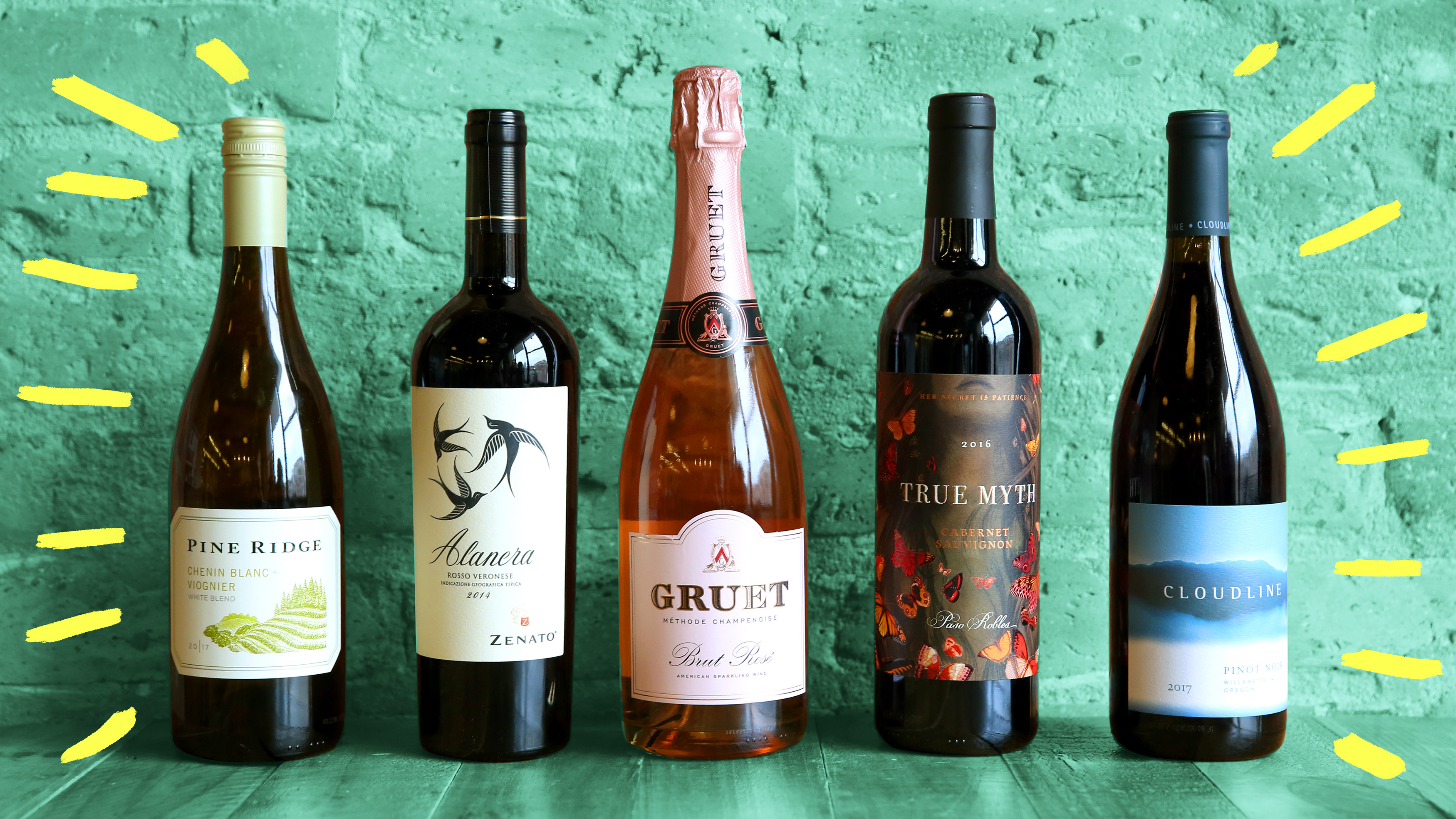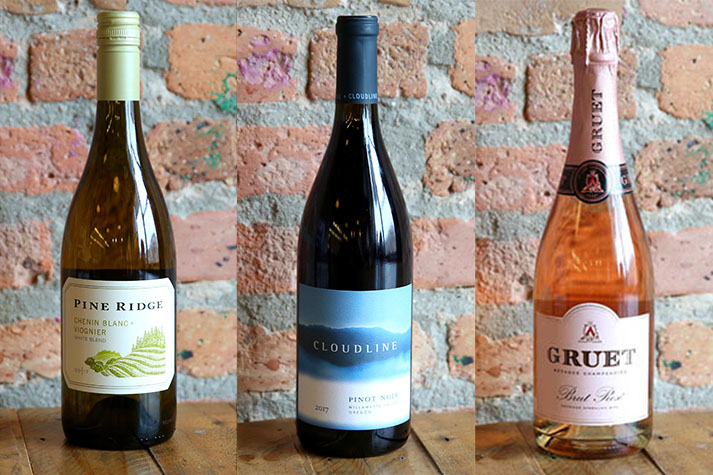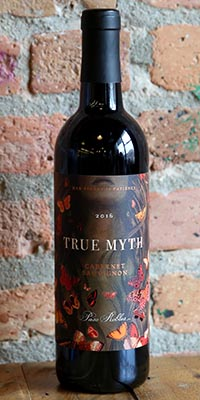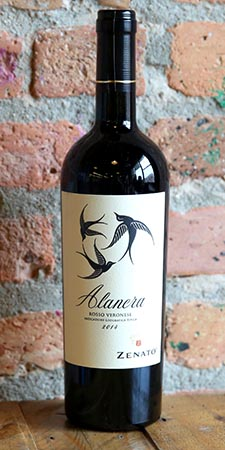Yes, You Can Find Really Great Wine At Trader Joe's For Under $20
Use these tips to navigate the Trader Joe's shelves like a connoisseur.
With the holidays around the corner, wine becomes the currency I traffic in. I barely leave the house from now through the end of December without carrying a bottle (well, at night, anyway) for a dinner party or ugly sweater gathering—or, more importantly, any social event involving relatives.
So I need a lot of wine, and I am the kind of person who can barely fill the nine-bottle holder we have in the dining room for whatever reason. We always seem to be opening up a bottle when guests come over or carrying wine to a neighbor's, so when the planets align and I do have nine whole bottles at once, I feel extraordinarily grown up.
So, obviously, I need to replenish. But I don't have a ton of disposable alcohol cash, especially around holiday time. So how does a person like me—who can generously be called a wine amateur—sniff out some bargains in time for holiday drinking season? And at my favorite store with an extensive wine section—like Trader Joe's, say?
Even with the friendly Trader Joe's staff available, I felt like I needed some extra help. Lucky for me, Keith Whitten, general manager and wine director at Daisies in Chicago's, agreed to come on board. Whitten is a certified sommelier who curated that Trader Joe's wine section like a champ (and also guided me through a post-shopping tasting). As he did so, I took some furious notes with some hopefully helpful guidelines for navigating your way toward excellent, lower-priced TJ wine.
Look for little-known varietals from well-known producers
Here's a hint to finding those hidden wine values: Look for well-known producers making the varietals that they're not necessarily famous for. That way, says Whitten, "You're getting the skill and attention to detail of high-class winemakers on something they're selling to you for less than a premium, because it's not the thing that pays the bills for them."
For example, he says that Pine Ridge is best-known for their Napa cab and sauvignon blanc. But TJ's houses their Viognier/chenin blanc blend, "grapes that people don't usually gravitate to immediately, a little off the beaten path. For eleven dollars a bottle, this is dynamite." When we taste it later (best job ever), I'd actually forgotten how good it was because I've picked it up there a few times. Whitten credits it with a "minerally richness, crisp on the finish." It would make a perfect turkey wine for the white drinkers at your Thanksgiving day table. At only $11, I should have bought a case.
Similarly, Cloudline Cellars is a secondary label from the well-known Drouhin family, offering "a decent Oregon pinot for $15, which is not necessarily easy to find in a name we can trust." Whitten also selects a beautiful brut rosé from New Mexico wine family Gruet: "well-known family, you can find it, trusted label, good value, good with food, good with company." I note that it's funny how much rosé has come into its own, exploding over the last five or six years, and Whitten agrees. Tasting the Gruet, I'm just glad that it did: This $14 rosé is effervescent, perfectly dry, straight-up delicious. Since my friends pretty much all favored pink and fizzy for the summer, this bottle would be a hit come New Year's Eve or a holiday toast.
Toss in a few extra bucks to take your wine choices to the next level
The difference in quality between your $12 bottle of wine and your $16 one may be much more than four dollars. Whitten stresses the importance of those different price points. "Under $15, we're really gambling. Between $15 and $20, our chances are much better. Tossing in that $5 significantly increases your chances of getting something better. Even at Trader Joe's." Loving wine like I do, I'd say it's worth the investment.
Take a pass on the house label or table wine blend
In the store, I point out that there's only one bottle left of the Trader Joe's house brand Brut Rosé, which if I were on a regular TJ's shopping trip, would cause me to snap up immediately, figuring that the rest of the store shoppers know something I don't. Whitten says no, though. "I always kind of veer away from a store's labels. Because it's usually the leftover juice from something that is produced really cheaply and just slapped a label on."
Same with the seemingly friendly "house wine" or "table wine" designation you see on some labels. "I think it's being used as a marketing tool these days, to imply, 'this isn't snobby, everyone's gonna like this.'" But sometimes that bar is set a bit too low, according to Whitten: "I find most of them to be underwhelming; they're usually like super-jammy on the reds and like tropical fruit cocktail on the whites." Pass.
Try out organic labels
By buying organics, not only are you being environmentally conscious, it can lead you to some better, relatively inexpensive wines. Whitten says that these smaller producers "have a little more dedication and attention to detail. It's the idea of buying something that's a little more handcrafted or artisan than mass-produced." He picks up a beautiful bottle of True Myth cabernet, "part of a larger company that does a lot of work organically and does some pretty conscientious attentive farming even at a large scale." That's a nice one to find, right at our sweet spot of $16; I probably would have picked it up just for the autumnal butterfly label alone. When I share it with some co-workers later, we all agree that this cabernet sauvignon is heavenly—rich and refreshingly jammy but not overwhelmingly so.
Stick with regions you like
For a long time, I was a Marlborough sauvignon blanc drinker; pretty much anything from New Zealand I was a fan of, which just meant that I was jonesing for that particular grape grown in that particular climate. Some people nowadays are the same way about Oregon pinot noirs, which Whitten calls "the classic Oregon cherry cola dry finish." I have a friend who always has a bottle of A To Z Pinot Noir on her counter, and it definitely falls into the under $20 at Trader Joe's category. Whitten points out that A To Z was one of the first companies in Oregon to "make wine in quantity, where it could get in front of a vast percentage of people," resulting in a reasonably priced pinot that's good to have as a standby (as my friend would be the first to tell you).
I noticed a lot of labels at in the TJ wine aisle sporting Paso Robles as a territory, which is located on the coast between San Francisco and Los Angeles. Whitten called it "a good place to get some good value red wines. Warmer area, so it can produce fuller-bodied red wines. And because it's warmer, you grow a lot of grapes, so you can produce a recent amount."
At that point, though, Whitten says, "We have to get out of America," so we crossed the aisle to TJ's European section. He immediately grabbed a $13 bottle of Alanera, from Zenato, "a really solid long-standing producer in this area in Verona in Italy." This wine was a rosso Veronese, not a varietal I was familiar with. Whitten explains that it consisted of the same grapes that would go into an expensive Amarone, just made in a normal dry red wine style. When we tasted it later, it was smoky and almost black with "dark red fruits and nice acidity." But speaking of regions, says Whitten, you may just want to stick with Italy. "They produce a lot of wine, and they've got a lot of tradition behind it," making the chance of you finding a decent Italian bottle of wine for $15 pretty high.
Try some different varietals (yes, including merlot)
It's nuts, when you think about it, that a one-minute rant in the wine movie Sideways several years ago led merlot sales to drop considerably, just because Paul Giamatti's surly character Miles didn't like it. I think that points to how everyone wants other people to think that they're good at wine (myself included) so that they would never pull out the suspected faux pas of ordering merlot. As a result, Whitten comments, "If someone's making merlot right now, you know they're really trying," so it's probably worth an exploration.
And merlot's not the only one. Whitten thinks "it's always worth people's time to explore some non-familiar varietals. There's so much out there. Especially in white wine, there's a lot of value to be found outside of chardonnay and sauvignon blanc—a lot of diversity out there." But not in here in the Trader Joe's, to be honest; the vast majority of whites available fall under those two categories, making that Viognier/chenin blanc blend even more of a standout.
At the end of our awesome afternoon, Keith reminds me that even as a sommelier, he's still learning about what wines he likes and doesn't like: "After all, it's impossible to try them all." So why should plebes like myself (and possibly yourself) try to be some sort of expert? Instead, just take one of the suggestions above and buy a $15 bottle from Trader Joe's (or ask the friendly Hawaiian-shirted person at the store). If you love it, you have a staple forever. If you don't, you're out less than twenty bucks, and you move on to the next one. For a fan, the wine journey never really ends. But as with so many adventurous travels, the joy of a lower-priced, self-curated road trip can be more valuable—and fun—than a swanky flight in first-class.



